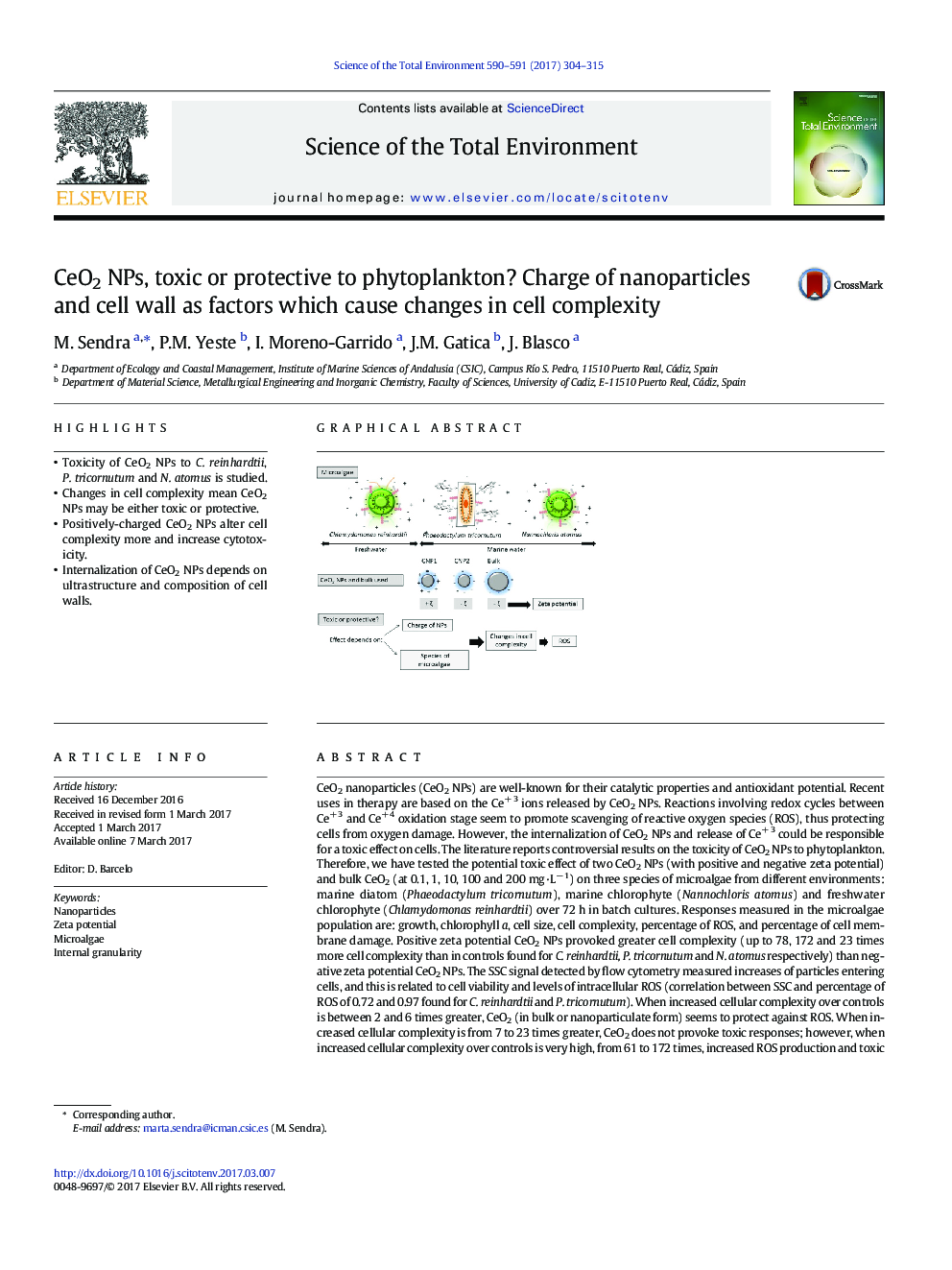| کد مقاله | کد نشریه | سال انتشار | مقاله انگلیسی | نسخه تمام متن |
|---|---|---|---|---|
| 5751046 | 1619704 | 2017 | 12 صفحه PDF | دانلود رایگان |

- Toxicity of CeO2 NPs to C. reinhardtii, P. tricornutum and N. atomus is studied.
- Changes in cell complexity mean CeO2 NPs may be either toxic or protective.
- Positively-charged CeO2 NPs alter cell complexity more and increase cytotoxicity.
- Internalization of CeO2 NPs depends on ultrastructure and composition of cell walls.
CeO2 nanoparticles (CeO2 NPs) are well-known for their catalytic properties and antioxidant potential. Recent uses in therapy are based on the Ce+ 3 ions released by CeO2 NPs. Reactions involving redox cycles between Ce+ 3 and Ce+ 4 oxidation stage seem to promote scavenging of reactive oxygen species (ROS), thus protecting cells from oxygen damage. However, the internalization of CeO2 NPs and release of Ce+ 3 could be responsible for a toxic effect on cells. The literature reports controversial results on the toxicity of CeO2 NPs to phytoplankton. Therefore, we have tested the potential toxic effect of two CeO2 NPs (with positive and negative zeta potential) and bulk CeO2 (at 0.1, 1, 10, 100 and 200 mg·Lâ 1) on three species of microalgae from different environments: marine diatom (Phaeodactylum tricornutum), marine chlorophyte (Nannochloris atomus) and freshwater chlorophyte (Chlamydomonas reinhardtii) over 72 h in batch cultures. Responses measured in the microalgae population are: growth, chlorophyll a, cell size, cell complexity, percentage of ROS, and percentage of cell membrane damage. Positive zeta potential CeO2 NPs provoked greater cell complexity (up to 78, 172 and 23 times more cell complexity than in controls found for C. reinhardtii, P. tricornutum and N. atomus respectively) than negative zeta potential CeO2 NPs. The SSC signal detected by flow cytometry measured increases of particles entering cells, and this is related to cell viability and levels of intracellular ROS (correlation between SSC and percentage of ROS of 0.72 and 0.97 found for C. reinhardtii and P. tricornutum). When increased cellular complexity over controls is between 2 and 6 times greater, CeO2 (in bulk or nanoparticulate form) seems to protect against ROS. When increased cellular complexity is from 7 to 23 times greater, CeO2 does not provoke toxic responses; however, when increased cellular complexity over controls is very high, from 61 to 172 times, increased ROS production and toxic responses are found. Results show that two factors, the charge of CeO2 NPs and cell wall structure, constitute the primary barrier to the possible accumulation of CeO2 NPs within phytoplankton cytosol.
161
Journal: Science of The Total Environment - Volumes 590â591, 15 July 2017, Pages 304-315